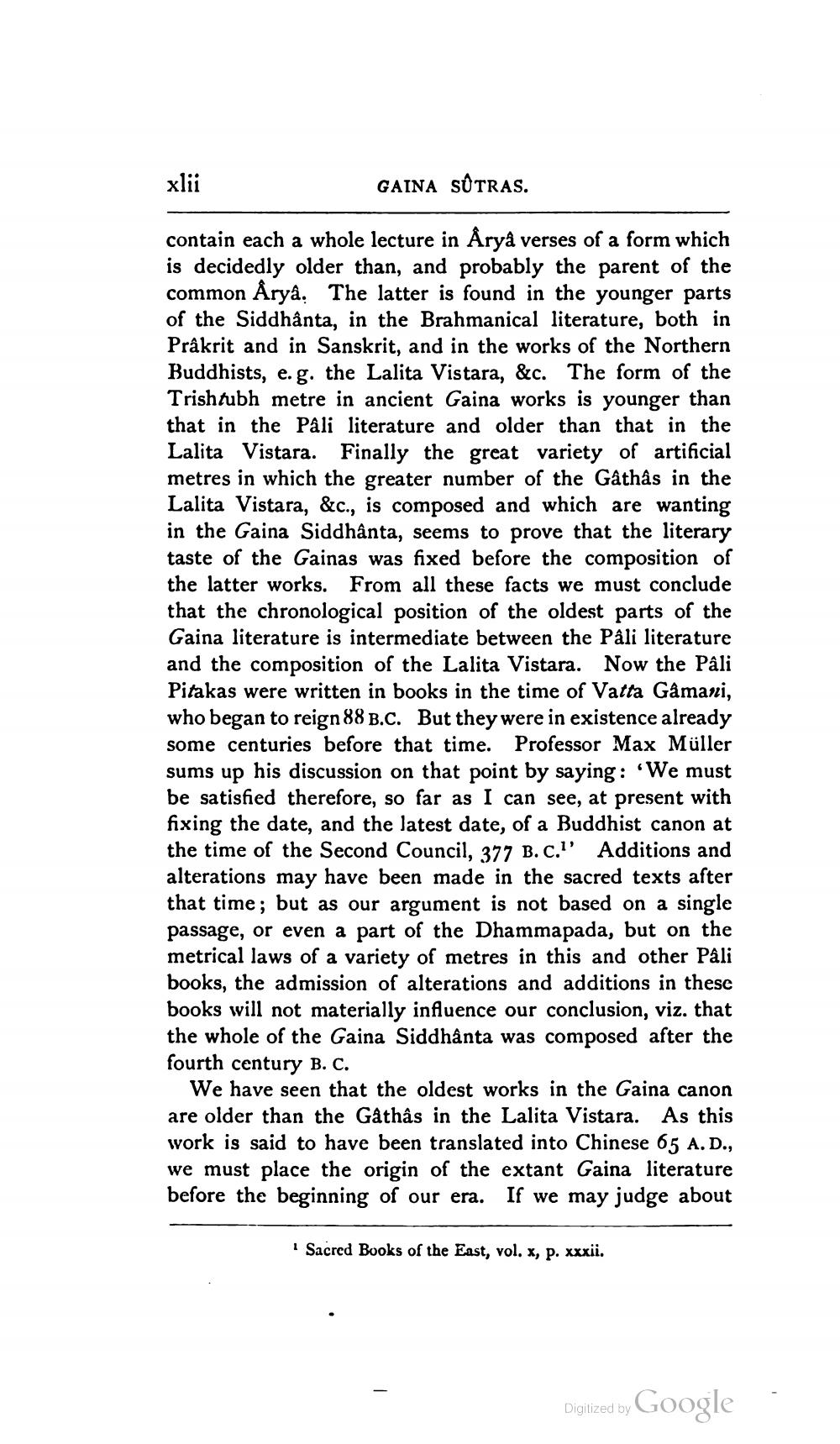________________
xlii
GAINA S TRAS.
contain each a whole lecture in Åryâ verses of a form which is decidedly older than, and probably the parent of the common Årya. The latter is found in the younger parts of the Siddhânta, in the Brahmanical literature, both in Prakrit and in Sanskrit, and in the works of the Northern Buddhists, e.g. the Lalita Vistara, &c. The form of the Trishtubh metre in ancient Gaina works is younger than that in the Pali literature and older than that in the Lalita Vistara. Finally the great variety of artificial metres in which the greater number of the Gâthâs in the Lalita Vistara, &c., is composed and which are wanting in the Gaina Siddhânta, seems to prove that the literary taste of the Gainas was fixed before the composition of the latter works. From all these facts we must conclude that the chronological position of the oldest parts of the Gaina literature is intermediate between the Pâli literature and the composition of the Lalita Vistara. Now the Pâli Pitakas were written in books in the time of Vatta Gåmani, who began to reign 88 B.C. But they were in existence already some centuries before that time. Professor Max Müller sums up his discussion on that point by saying: 'We must be satisfied therefore, so far as I can see, at present with fixing the date, and the latest date, of a Buddhist canon at the time of the Second Council, 377 B. c. Additions and alterations may have been made in the sacred texts after that time; but as our argument is not based on a single passage, or even a part of the Dhammapada, but on the metrical laws of a variety of metres in this and other Påli books, the admission of alterations and additions in these books will not materially influence our conclusion, viz. that the whole of the Gaina Siddhânta was composed after the fourth century B. C.
We have seen that the oldest works in the Gaina canon are older than the Gåthâs in the Lalita Vistara. As this work is said to have been translated into Chinese 65 A.D., we must place the origin of the extant Gaina literature before the beginning of our era. If we may judge about
Sacred Books of the East, vol. x, p. xxxii.
Digitized by
Digitized by Google




